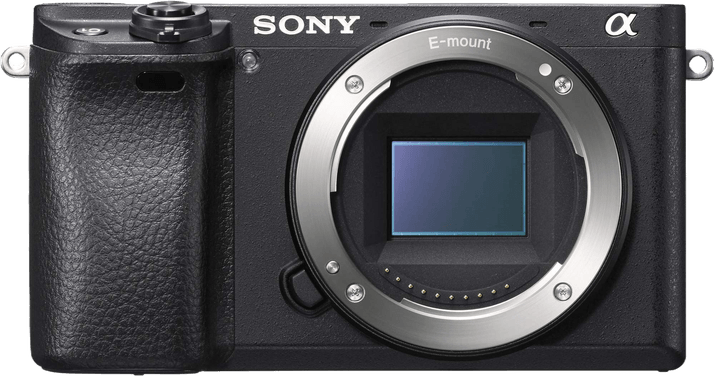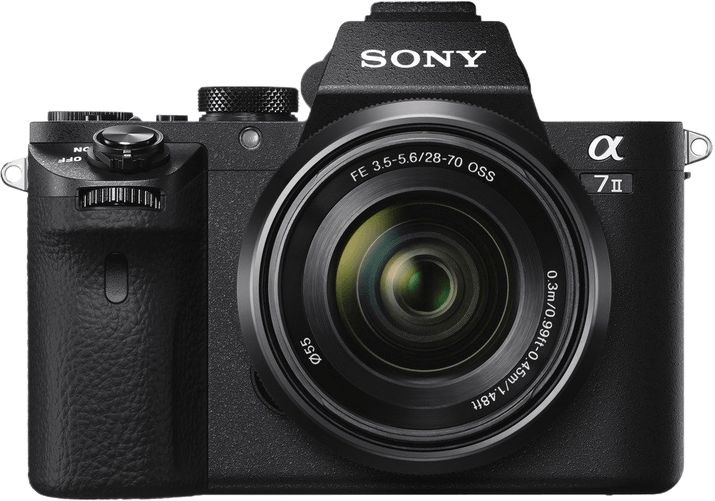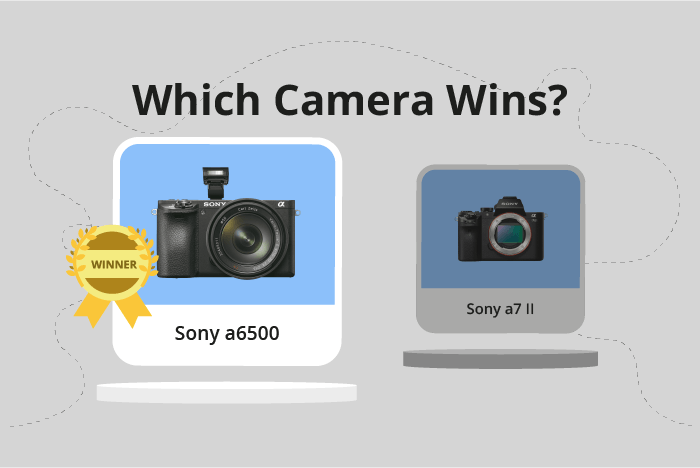Sony a6500 vs a7 II Comparison
Sony a6500

Sony a7 II

The Sony a6500 takes the lead with a score of 72/100, while the Sony a7 II trails behind with a score of 69/100. Both cameras are mirrorless and were launched at relatively high prices, with the a6500 at $1400 and the a7 II at $1600. The cameras share similar dimensions, but the a6500 is notably lighter, weighing 453g compared to the a7 II’s 599g.
The Sony a6500’s higher score indicates its better overall performance, and its lighter weight makes it more portable. On the other hand, the Sony a7 II, though slightly heavier, has its own strengths and may still be a good choice for some users. Considering the specifications and scores, both cameras offer great features, but the a6500 stands out as the better option.
Sony a6500 vs a7 II Overview and Optics
The Sony a7 II comes out ahead in optics with a score of 78/100, compared to the Sony a6500’s score of 74/100. Both cameras share several common specifications, including 24.2 megapixels, CMOS sensor type, Bionz X processor, Sony E lens mount, and image stabilization.
The Sony a7 II’s higher score is due to its superior sensor. With a DXOMARK score of 90, the a7 II’s full-frame sensor outperforms the a6500’s APS-C sensor, which has a DXOMARK score of 85. The full-frame sensor in the a7 II allows for better low-light performance and increased dynamic range, resulting in higher quality images.
Additionally, the Sony a7 II has a slower shooting speed at 5 frames per second (fps), while the Sony a6500 boasts a faster 11 fps. This faster shooting speed makes the a6500 more suitable for action photography and capturing fast-moving subjects.
Despite the a7 II’s higher score in optics, the a6500 has its advantages. The a6500’s smaller sensor size makes it a more compact and lightweight option, which can be beneficial for those who value portability. However, this smaller sensor size may not provide the same image quality as the a7 II’s full-frame sensor.
To sum up, the Sony a7 II is the better choice for photographers who prioritize image quality, due to its superior full-frame sensor. On the other hand, the Sony a6500 offers a faster shooting speed and a more compact design, making it a suitable option for action photography and those who value portability.
Sony a6500 vs a7 II Video Performance
The Sony a6500 outperforms the Sony a7 II in video capabilities, scoring 77 out of 100 points compared to the a7 II’s 56 points. Both cameras share some common specifications, such as lacking built-in time-lapse functionality. However, the a6500 has superior features that contribute to its higher score.
The Sony a6500 boasts a maximum video resolution of 4K, with dimensions of 3840 x 2160, providing a crisp and detailed image. On the other hand, the a7 II only offers Full HD resolution, with dimensions of 1920 x 1080, which is considerably lower in quality. Furthermore, the a6500 has a higher maximum video frame rate of 120fps, allowing for smoother motion capture and slow-motion effects. The a7 II’s frame rate is limited to 60fps, which is adequate but not as impressive as the a6500’s capabilities.
Despite its lower score, the Sony a7 II still has some advantages in certain situations. For example, if a user prioritizes a compact and lightweight camera, the a7 II may be a better choice. Additionally, its Full HD resolution might be sufficient for those who do not require ultra-high-definition video.
Taking these factors into account, the Sony a6500 clearly offers superior video performance, making it the preferable choice for videographers and content creators seeking high-quality footage. The a7 II, while not as impressive in this aspect, still has its merits and may be suitable for users with different priorities or budget constraints.
Sony a6500 vs a7 II Features and Benefits
The Sony a6500 comes out as the winner with a feature score of 81/100, while the Sony a7 II trails behind with a score of 57/100. Both cameras share some common specifications, such as having a 3-inch screen size, flip screen functionality, no GPS, and WIFI capabilities.
The a6500 surpasses the a7 II in several aspects. It has a touchscreen, making it more user-friendly and allowing for quicker adjustments. Additionally, the a6500 features Bluetooth connectivity, providing more versatility in transferring files and remote control options.
On the other hand, the a7 II has a higher screen resolution of 1,230,000 dots compared to the a6500’s 921,600 dots. This results in a sharper display and better image quality when reviewing photos and videos on the camera screen. However, the lack of a touchscreen and Bluetooth capabilities put the a7 II at a disadvantage compared to the a6500.
Taking these points into consideration, the Sony a6500 outperforms the a7 II in terms of features. Its touchscreen and Bluetooth connectivity provide a more convenient user experience, contributing to its higher score. The a7 II, while having a higher screen resolution, falls short due to missing features that are present in the a6500.
Therefore, the Sony a6500 is the better choice for those looking for a camera with more advanced features and better usability. The Sony a7 II may still be suitable for those prioritizing a sharper screen display, but its lower feature score reflects its limitations compared to the a6500.
Sony a6500 vs a7 II Storage and Battery
The Sony a6500 and Sony a7 II are close matches in storage and battery. Both cameras have a single memory card slot and support SD, SDHC, and SDXC cards. They also accept Memory Stick Pro Duo cards, with the a7 II additionally supporting Memory Stick Duo and Pro-HG Duo cards. The battery life of both cameras lasts for 350 shots, using the NP-FW50 battery type.
The a7 II has an advantage in memory card compatibility, accepting more types of Memory Stick cards. However, the a6500 does not have any distinct advantages in storage and battery.
Ultimately, the storage and battery capabilities of both cameras are quite similar, with the a7 II slightly ahead due to its broader memory card support.
Alternatives to the Sony a6500 and a7 II
Are you still undecided about which camera is right for you? Have a look at these popular comparisons that feature the Sony a6500 or the Sony a7 II:

